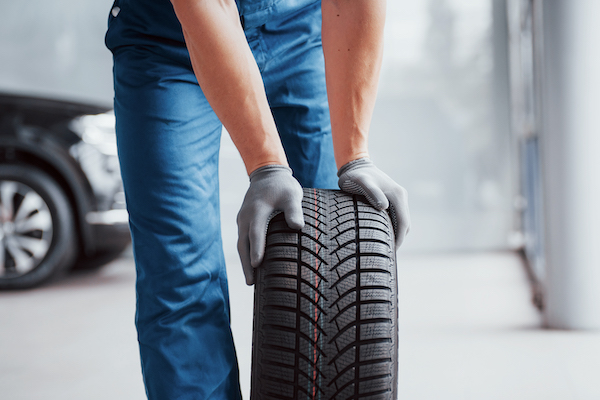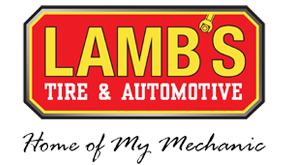Austin Tire Shop Guide: Selecting the Best Tires for Your Car

When it’s time for new tires, choosing the right ones can be confusing. With a little knowledge, however, buying the new tires that are best for your vehicle and driving habits can be easier. This guide offers information on what to look for when you go tire shopping.
Types of tires
When you're in the market for new tires for your car or truck, one of the first things to consider is the type of tires you need. There’s a wide variety of tires, each of which are designed for particular driving conditions and different types of vehicles. Here are some of your options:
- Touring tires: These tires are a great choice when you are looking for comfort and stability. This large group of tires includes a large selection that are appropriate for almost any car, from luxury vehicles to those that can be driven on a daily basis, and can be used in practically all weather conditions. Touring tires can provide excellent safety on wet and dry roads while offering a good balance between softness and silence, plus excellent performance. If you are looking for the best tires for everyday driving under varying weather conditions and on any road, the standard selection is often all-weather touring tires.
- High-performance tires: These tires can be the best choice for higher-end luxury and sports cars, or when you are in search of stability and performance. High-performance tires are engineered for high speed in both wet and dry weather. These tires are manufactured with a softer rubber compound that provides better traction and stability on high speed curves, giving you that feeling of "hugging" the road even at higher than normal speeds. Keep in mind that the tread life of these tires may not be as long as with other tires engineered for daily driving. Even so, the extra grip they provide is well worth what they may lack.
- Truck tires: If your vehicle of choice is a pick-up truck or an SUV, truck tires will provide durability and traction under adverse driving conditions, especially off-road. On the other hand, SUV tires are the ideal choice for highway driving and comfort. Truck tires are available in a wide range of brands and choices, each one with similar characteristics. For example, commercial truck tires are designed to provide stability and a smooth ride in muddy conditions, as well as for the daily wear and tear that commercial trucks are subjected to. Your Austin tire store expert at Lamb’s will gladly explain which ones are the best for your vehicle.
At the tire store: Meeting your needs
At Lamb's Tire & Automotive, our tire pros make sure your new tires meet all of your needs. You’ll want to talk with your tire tech about your typical driving conditions and the level of performance criteria you are looking for. For example, traction is more important on a wet road than the ability to take on curves on a dry road. Remember, the more information you give your tire installation tech, the easier it will be to find the right tires for your needs.
The great majority of tires are designed for use under all weather conditions. They have deep water channels to improve traction on wet surfaces, but also have been manufactured with a more resistant rubber compound to extend the tire's life in hot weather.
All-terrain tires, also known as A/T tires, are ideal for drivers who enjoy taking their vehicles off road and limit their highway driving time. These tires have sturdier sides for a higher resistance to punctures when they are driving in rugged terrain and a more ample design than that of an all-weather tire. This helps to remove mud and other debris from the tire.
Tire Size
Knowing the size of the tires your car will need can help you save time when you visit the tire store, while helping you make an informed choice. The original tire size for your car can be found in the owner's manual or in the sticker located on the driver's side door, glove compartment, or inside the fuel cap cover. If you have any doubts, your Lamb's Tire & Automotive tech will be happy to help. You can also check the side of the tires your car has now. There you will find a measurement made up of numbers and letters, such as "175/60/ R-13," which we will explain below:
- Width of the tire: The three digit number makes reference to the total width of the tire in millimeters. In the case of our example above, the width of the tire would be 175 millimeters, or 6.89 inches.
- Aspect ratio: This refers to the relation between the height of the tire and its width. In our example it is equivalent to 60% of the width of the tire.
- Radial: The letter "R" indicates a radial engineering of the layers of the shell. The layer of the shell goes through the tire from lip to lip, providing strength, stability, flexibility, and a comfortable drive.
- Diameter of the tire: This number indicates that the tire fits on a wheel that measures 13 inches in diameter.
- Load index : The load index stated on the side of your tire can range from 0 to 279 and it will indicate how much weight a tire can carry at its maximum inflation pressure. Never buy a tire with a load index that is lower than the original index of the vehicle. To determine the load index of your tires you can ask your tire installation tech.
- Speed range: The speed range indicates the maximum speed at which a tire can operate. It varies from Q (the lowest) to Z (the highest) with one exception: the H index is located between U and V. To maintain the speed capacity of your car, always use replacement tires with indexes that are equal or higher than those of the original tires.
Tire shop talk: Things you should never do.
Before you head out to the nearest Austin tire shop to get a new set of tires for your car, keep in mind the following tips to help you stay safe and get the most out of your daily drive.
- Never choose a tire that is smaller than the original tires of your vehicle. If you are interested in a tire size that is different to that of the original equipment, make sure to check with your Lamb's Tire & Automotive tire installation tech.
- For vehicles with front- or rear-wheel drive, we suggest mounting the new tires on the rear axle to prevent an unstable drive. When you purchase only one tire it must be paired on the rear axle with one that has a higher floor depth.
- Don’t combine radial and conventional tires on the same axle.
- For four-wheel drive vehicles, if the instructions on combining tires are not listed in the owner's manual, please follow these guidelines: Never combine tire sizes; the four tires must be of the same measurement. Don't combine radial and conventional tires; be sure that the external circumference of all four tires measures within 1 and a half inches from the others, and never use different band designs (for example, all terrain and all weather) or your tires may not have an adequate grip when braking.
Lamb's Tire & Automotive: More than just a tire store
At Lamb's Tire & Automotive, our driving force is your safety on the road. In order to ensure you and your vehicle are safe under any conditions, we offer a wide range of services, including tire repair and tire installation, as well as some of the most exciting tire deals in town! So don't hesitate and set up an appointment today.
Frequently Asked Questions
How long do tires last on your car?
The life span of tires can vary significantly depending on tire type, driving habits, road conditions, and tire maintenance. Depending on these factors, most tires can last between 25,000 and 50,000 miles, but this can vary.
Aggressive driving, excessive speeding, and frequent braking can put more stress on your tires and reduce their life span, while gentle driving and avoiding sudden stops and starts can help your tires last longer.
Proper tire maintenance is critical to extending the life of your tires. This includes regularly checking your tire pressure, rotating your tires, and inspecting them for signs of wear and damage. By following these guidelines, you can help your tires last longer and perform better.
Should I replace all four tires?
Yes, it's generally recommended to replace all four tires at the same time. Mixing tires with different sizes, brands, or tread patterns can affect your vehicle's handling, stability, and braking performance. Replacing all four tires will help maintain consistent performance and safety on the road.
When you replace all four tires, you can ensure that all of them have the same tread depth and grip. This can help improve your vehicle's handling and braking distance, especially in wet conditions. Additionally, replacing all four tires can help prevent uneven wear and tear, which can extend tire life.
What should I ask when buying tires?
When purchasing new tires in an Austin, TX tire store, it's important to consider several factors, including:
- Tire type: What type of tire is best suited for your vehicle and driving habits? Do you need all-season tires, performance tires, or off-road tires?
- Tire size: What is the correct size for your vehicle, including the width, rim diameter, and aspect ratio?
- Tire brand: What specific brands of tires do you recommend based on quality, performance, and price? Do any have better durability or longevity?
- Tire price: What is the price range for the tires you recommend? Are there any current discounts available? Are installation, balancing, and alignment included in the price?
- Warranty: What is the warranty coverage for the tires you are considering? Does the warranty cover defects, wear and tear, or both?
Asking these questions can ensure that you are making an informed decision when purchasing new tires for your vehicle.
What do I need to know about replacing tires?
Replacing your tires is a relatively simple process that can be performed by a professional tire shop in Austin, TX. When you bring your car in for a tire replacement, the mechanic will remove your old tires and install the new ones. They will usually also balance the tires to ensure even wear and tear and perform a wheel alignment to ensure that your tires are properly aligned.
It's important to choose a reputable tire shop that has experience working with your type of vehicle. You should also be aware of the cost of tire replacement, including installation, balancing, and alignment.









